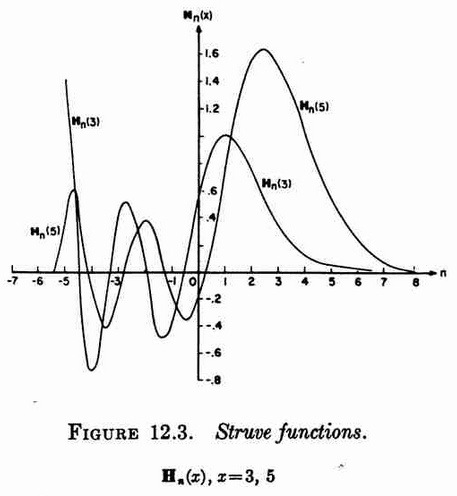Struve function
The Struve functions are defined by $$\mathbf{H}_{\nu}(z)=\left(\dfrac{z}{2}\right)^{\nu+1} \displaystyle\sum_{k=0}^{\infty} \dfrac{(-1)^k\left(\frac{z}{2}\right)^{2k}}{\Gamma(k+\frac{3}{2})\Gamma(k+\nu+\frac{3}{2})}$$
Contents
Properties
Theorem: The Struve function $H_n$ solves the following nonohomogeneous Bessel differential equation $$x^2y(x)+xy'(x)+(x^2-n^2)y(x)=\dfrac{4(\frac{x}{2})^{n+1}}{\sqrt{\pi}\Gamma(n+\frac{1}{2})}.$$
Proof: █
Theorem
The following theorem holds: $$\mathbf{E}_0(z)=-\mathbf{H}_0(z),$$ where $\mathbf{E}_0$ denotes a Weber function and $\mathbf{H}_0$ denotes a Struve function.
Proof
References
Theorem
The following formula holds: $$\mathbf{E}_1(z)=\dfrac{2}{\pi}-\mathbf{H}_1(z),$$ where $\mathbf{E}_1$ denotes a Weber function and $\mathbf{H}_1$ denotes a Struve function.
